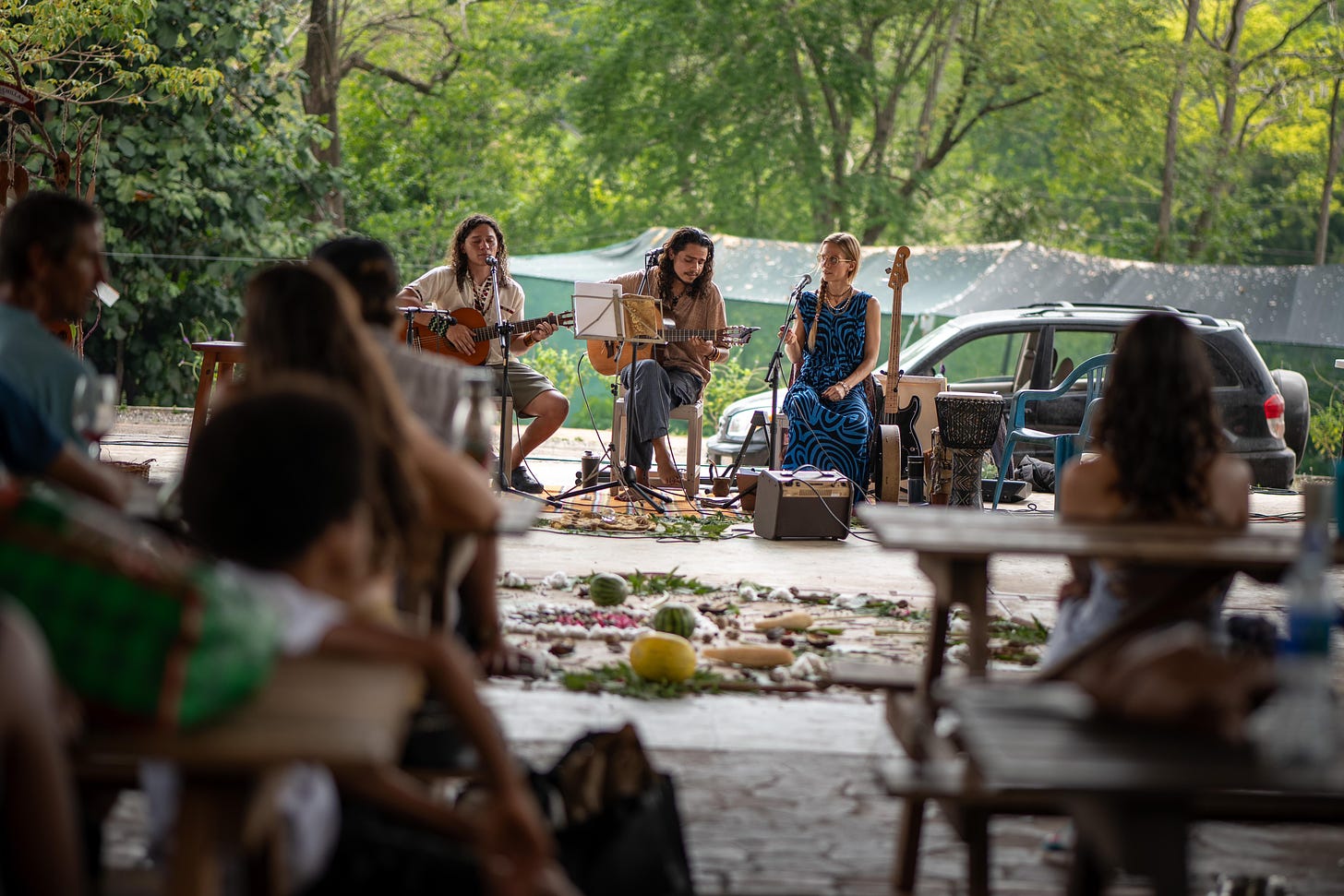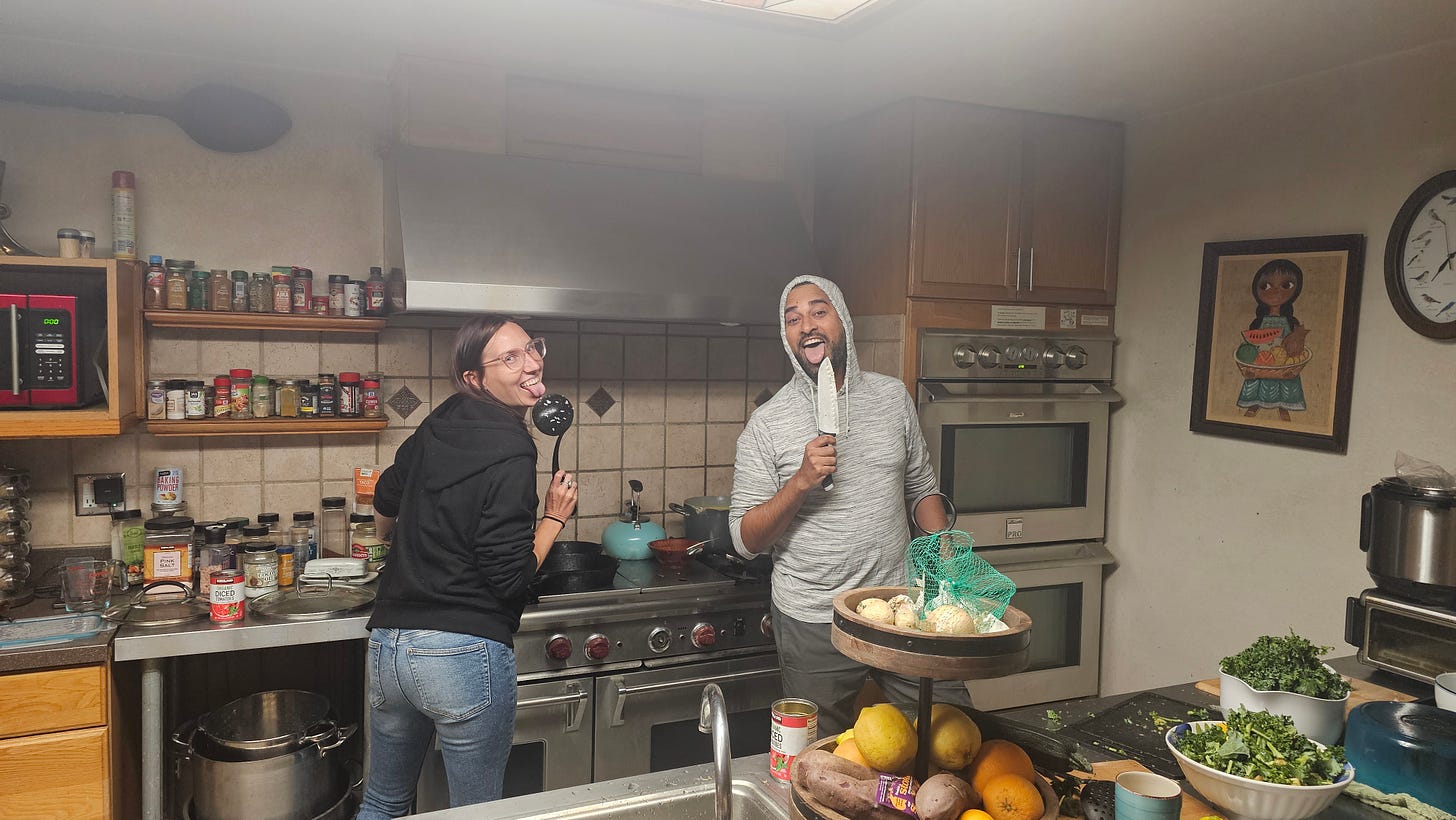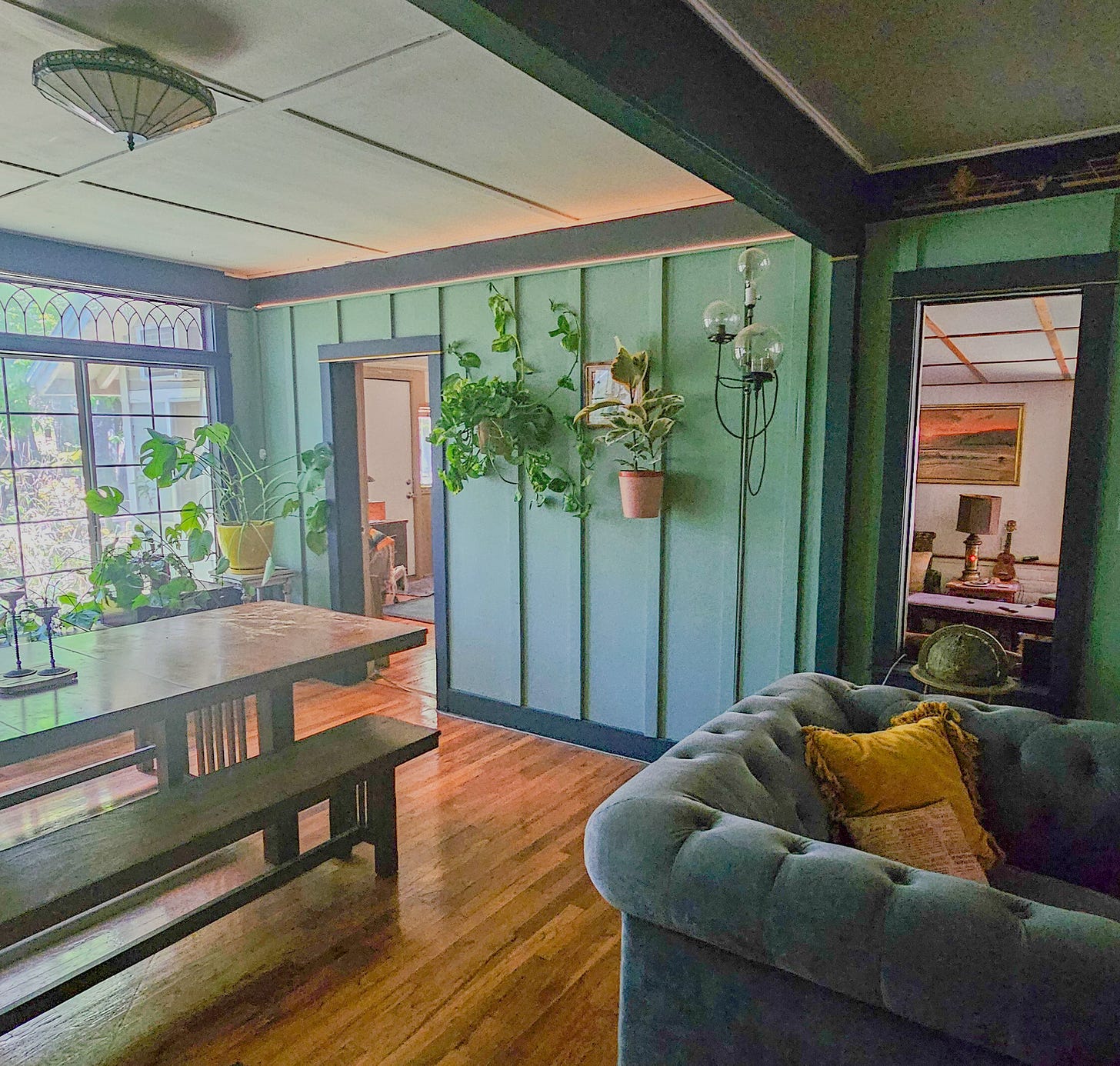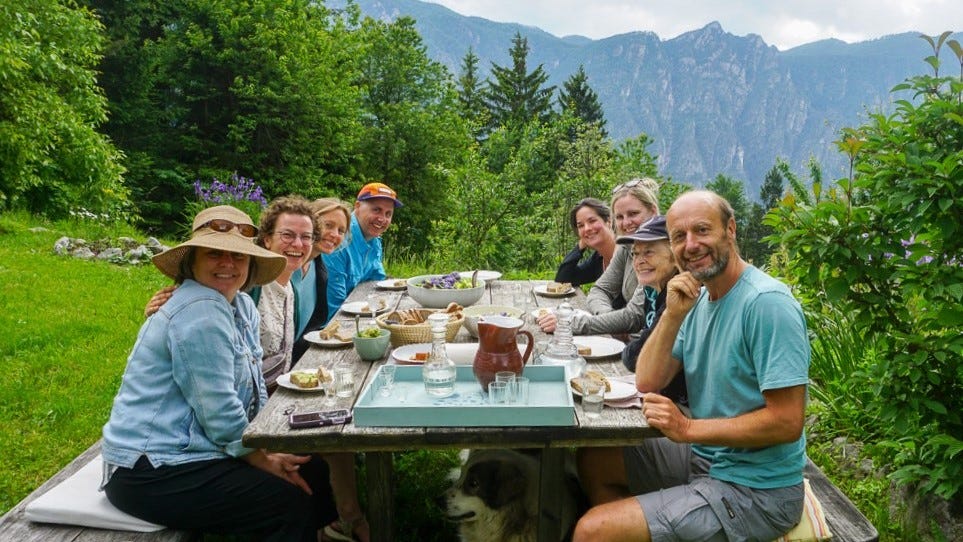I conducted a survey with some community founders last year, and you want to know what they listed as their #1 desire?
More capable, aligned community members.
This short listicle covers highly effective ways to recruit and screen community members.
The Paradox of Awesome Communities
I’m writing this from Wild Seeds in San Diego, an awesome 4.1 acre, multi-building, multi-story, 17-bedroom artist community with 3 community kitchens, uncountable office/coworking areas, a flowing creek, a few tiny homes, edible gardens, several shared power tool workshop areas, and a lot of potential.
With
, I met the owner of Wild Seeds in Berlin over the summer at a Cohere residency. What he wanted back then and what he still wants?More long-term community members who can hold the torch of the space.
While they have hosted several events and mini-festivals at the space, members have mostly trickled in through word of mouth.
The place has about 10 residents, but needs more people to come help build it. He's not attached to being the head chief of anything — there are definitive plans for shared ownership.
He’s an ideal owner who coordinates bulk buys, offers incredibly affordable housing, throws in shared food costs and utilities to already low rent, and is figuring out ways to coordinate shared phone plans and incorporate the community as a company so members can get health insurance through the community itself.
The place is pretty awesome, and has so many things already going for it.
I guarantee you that there are so many more amazing communities that I’ve personally seen that have so much already going for them and just need more members.
Conversely, I’ve met just as many people sighing and wishing they could live in community but not knowing about places like this.
Let’s change that.
5 Recruitment Strategies
There are surely more, but I want to focus on the most fundamental ones.
1. Start or Join an Online Community
This one is really basic, but can’t be omitted. Here you can have a zero-risk space with a rather large funnel to help attract likeminded people you can select from.
This can look like:
creating a community profile on Tribes
starting a group chat
creating a discord group
joining conscious social platforms like Hylo
hosting regular livestreams, huddles, or spaces on major social media platforms
The main hack here is to create a group that is not exclusively dedicated to your community per se, but to the values/lifestyle/whatever that your community espouses. This will create more buy-in and opportunities long-term.
This is your wide funnel.
2 . Create an Internship/Apprenticeship Program
I used to think that volunteer programs were a great way to save on labor, and in many communities, the volunteer program works. Often, volunteers become long-term community members.
However, if you want to avoid the drama, poor work ethic, and high turnover that is typical of work exchanges, I would opt instead for crafting an internship and/or residency program.
The program(s) can be aimed at students and professionals in fields related to sustainability, agriculture, and community development.
You can also partner with non-profit organizations or educational institutions to achieve a higher quality of “volunteer”.
This doesn’t mean that you shouldn’t consider a volunteer program, but my experience tells me that you can craft the offer a little better to avoid the typical downfalls.
What has your experience with volunteer programs been?
3. Get Featured
This is simple audience hacking.
You might as well find people with bigger audiences than yours to validate your community. With Ecovilla where I live now, a huge influx of community members came from
not only buying there, but publicly endorsing it in an article.Of course, they should have the same relevant audience.
Here’s how to get your community featured by people that will bring awesome members:
Design Challenges — everything from commissioning an art piece from a well-known artist to creating a competition for architects to bid on your project.
Collab — straight up headhunt people as awesome cofounders so you can combine your networks.
Get in the news — write a press release to share with publications. If you do just a little of the lifting of writing about your community, publications will be more willing to accept the editorial responsibility of featuring you.
Influencer and Thought Leaders— invite people to your community and gift them stays in exchange for content or endorsement. Word of caution: some people might offer this because they have the skills, but not deliver after staying in your community and just disappear. Make sure they have their own audience and an incentive to share.
It doesn't hurt to borrow the eros of public figures.
While people might not go out of their way to promote your community from the spontaneous goodness of their heart, they are much more likely to when you ask them.
4. Host Open Days and Tours
This is the hard sales pitch.
This is where you lead people around your community space and introduce them to your community vision.
I would also recommend recording a virtual land tour to share with people. This is what I suggested to the owner of Wild Seeds, because photos just can't do the whole place justice.
If you don’t have land, you can have biweekly or monthly webinars solely dedicated to pitching and onboarding people to your community.
5. Events
This is the soft sales pitch.
It's pretty common to host or attend in-person events to gather likeminded people for your community.
These can be free or paid events, workshops, gatherings, parties, conferences, etc.
Some event ideas:
Potluck or Shared Meals
Swaps
Ceremonies
Concerts
Art Shows
Sleepovers
Immersive Experiences
The key is create a sense of what daily life could be like if the people lived at the community, and use the event to present any opportunities to get involved.

Online Presence
If you want to have a community, you will have to do outreach. This could be everything from making yourself easily discovered to actively seeking and vetting people.
Some communities avoid social media because they prefer to keep their community low-key, and only attract good vibes people.
That was the case with Wild Seeds when they were in the building phase, but now, they want to explore how to make the place known without drawing too much attention.
Now that they want to attract more long-term members, it’s definitely time to ramp up the online presence.
Attracting (and Keeping) Long-Term Members
As a final note on community member recruitment, if you want long-term members instead of lots of short-term people, you'll have to make sure you have a few things in place:
Long-term affordability
Co-creation opportunities
Quality living conditions
Some communities have no problem attracting members, but struggle to retain them. These are the top 3 reasons why.
That's it! What other community recruitment strategies do you recommend?
One of my affiliated partners, Community Finders, run by Cynthia Tina, offers services for people seeking ecovillages or building ecovillages. I highly recommend you join one of her courses to uplevel your ecovillage journey.
Use the code TERRENITY for $100 off your ecovillage tour.









I'd love to learn how to become educated and take part in building a learning about regenerative communities. I don't have a trade skill but very quick to learn and take part in areas that need help. I love community living. I've had a taste and I'm craving more. I want to be immersed in nature and learn how to use it's uniqueness instead of being part of the destruction. Could someone DM me how I can live there and become involved? Ig : kapow23 thanks so much! Kelly
Great articles. I just signed up on the Tribes org site. Do you have tips for people who are starting from scratch and want to form a group? People who are interested in intentional communities are already rare. It is even harder to find those who are interested in the same area.